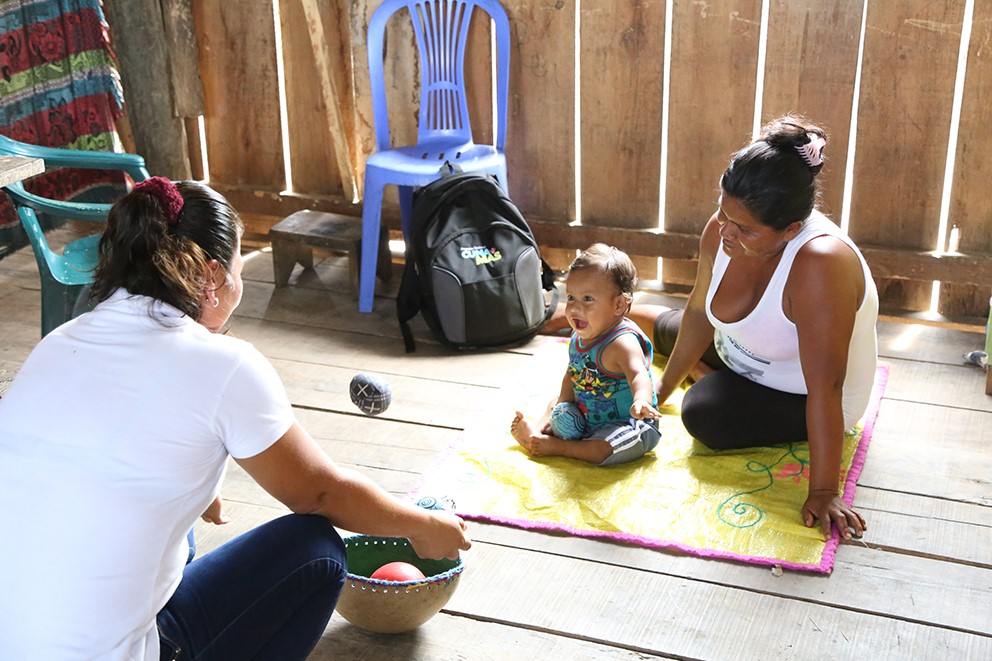By: Sarah Stanton and Ananya Subrahmanian
Originally published by The Dialogue's PREAL Blog.
Teachers are an essential component in the success of any education system. High-quality teachers are critical to student learning, and competitive salaries are one of the most effective ways to attract and retain effective teachers. However, teachers in the Latin American and Caribbean (LAC) region have fewer opportunities for salary raises compared with employees in other sectors, and the raises they do receive are often small relative to their compensation. The consequences of these salary policies can be felt throughout the region: rising rates of teachers—especially the most talented—leaving the profession, poor learning outcomes for students across the region, and limited opportunities to recognize effective teachers. A review of current policies reveals that most LAC teachers receive a salary heavily linked to seniority and qualifications, with limited opportunities to earn financial compensation for strong performance, and those opportunities that do exist are often for a one-time bonus rather than a permanent raise.
HOW ARE TEACHER SALARIES DETERMINED?
Salaries are most often determined by career ladder indicators, such as qualifications, years of teaching experience, or administrative positions. Although these indicators require a certain level of determination and ambition, there are also frequent opportunities to obtain them throughout an educator’s career. However, some salary raises are determined by performance-based indicators which can include competence-based tests, to assess mastery of content and pedagogy; teacher evaluations, including feedback from colleagues, supervisors, and students as well as formal observations and portfolio documents; and student learning outcomes, which consider test scores and other learning assessments. Unlike career ladder indicators, these performance-based measures provide financial incentives to teachers who prioritize professional development and student learning. Indeed, evidence has shown a strong association between performance-based salary increases and student learning outcomes. Additional determinants of salary increases include compensation for specific tasks beyond teachers’ standard responsibilities, for example working overtime or in a high-risk area.
Although compensation increases can involve either a raise of one’s base salary or a one-time bonus payment, the former is seen as a more effective reward for teachers. However, bonus pay is politically, technically, and financially easier to implement, given their one-time, fixed amount status.
The figure below shows the types of policies each country in the LAC region uses to determine teacher salary increases. Information was collected from 20 countries via government websites, Dialogue reports, and other policy publications.
Table courtesy of The Dialogue's PREAL Blog
Several key trends emerge from the data:
The majority of countries use a limited set of indicators to determine salary increases: Most countries rely heavily on qualification and seniority—both of which are career ladder indicators—to determine salary increases for teachers, and few countries use more than two or three indicators to determine raises. Mexico and Costa Rica stand out as two countries that include multiple and diverse indicators to determine teacher salaries, including career ladder and performance indicators. Overall, however, teachers throughout the region have fewer opportunities for increasing their salaries, since fewer indicators leads to fewer opportunities for financial reward.
Base salary increases are a more common policy mechanism than bonus pay for performance: Only five countries in the LAC region—Argentina, Brazil, Chile, Ecuador and Mexico—have policies for bonus pay, and only Ecuador and some Brazilian states use multiple indicators. Bonus payments are not appropriate for recognizing achievements such as seniority and qualifications, which accumulate over time and do not fluctuate. Instead, bonus pay is consistently determined based on performance-based indicators linked to evaluations or student performance, which can vary from year to year. This heavy reliance on base salary increases rather than bonus pay means that teachers are consistently recognized for loyalty to the profession, but not skill in its execution.
Few countries with teacher evaluation systems use performance results to offer financial incentives: Thirteen of the countries surveyed have formal teacher evaluation policies. Most of these evaluation systems have been in place for a few years and are administered regularly, but surprisingly few countries use the results from these evaluations to determine teacher compensation. Only six of the countries with formal evaluation systems have financial rewards linked to a positive performance review, and in only five countries do positive evaluation results lead to an increase in one’s base salary, the exception being Ecuador, which has a one-time bonus payment. Within these six countries, the consequences tied to teacher evaluations results vary; Chile and Ecuador, which have strong evaluation systems, reward positive results with salary increases and penalize poor performance with extra training and, potentially, dismissal. Colombia and Cuba reserve consequences for negative evaluation results, but offer no reward for positive ones. Honduras, which has only just begun implementing teacher evaluations, has not yet developed any concrete rewards or penalties tied to performance. The Dominican Republic, which also bases salary increases off evaluation results, does not have a mandatory evaluation system in place.
CONCLUSIONS
While career ladder-based indicators such as qualifications, seniority, and administrative positions have long been used as a basis for salary raises in the LAC region, they fail to recognize exceptional performance or incentivize excellent teaching. This is not to say that these indicators are unimportant—they have the potential to increase job stability, prevent high turnover rates, and encourage commitment to the profession. However, they are over-utilized relative to performance-based indicators. The majority of the countries discussed above employ three indicators or fewer to determine teacher pay increases, but they rely heavily on those which are linked experience rather than performance. A policy that attempts to balance recognizing seniority with incentives to improve—by increasing focus on performance-based indicators —could be a more effective way to incentivize improved teaching and learning outcomes. For example, Chile, which has one of the strongest education systems in the region, uses only three salary indicators, but employs both career ladder-related and performance-based inputs to determine salary increases.
Despite the lack of policies for performance-based pay in the region, the majority of the countries represented above have developed and implemented frequent teacher evaluations. Building these systems requires strong institutions and technical knowledge; countries should be applauded for their efforts to increase teacher accountability and encouraged to taking advantage of existing evaluation systems to recognize and improve teacher performance. For countries that cannot afford the cost of increasing salaries across-the-board, bonus pay could serve as a cost-effective starting point to reward teacher performance. In order for any of these policies to be effective, however, teachers and administrators must buy into the validity of the evaluation system and its use as a tool for determining pay. Improving opportunities for salary will incentivize effective teaching and improve the quality of the teaching profession and educational outcomes across the region.
This post is also available in: Spanish
The PREAL Blog is the blog of the Inter-American Dialogue’s Education Program. Find the orginal post here.


